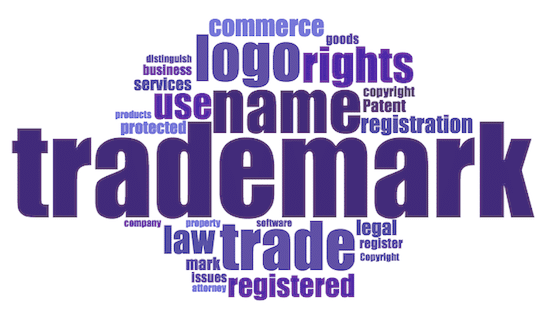The Process of Trademarking a Brand Name
In the swiftly evolving realm of commerce, building a robust brand presence is essential for differentiating yourself from rivals and attracting the interest of customers. The name you assign to your brand forms the core of your corporate image, symbolizing your offerings, provisions, and principles. Nevertheless, in today’s intensely competitive economic landscape, devising an original and distinctive…
In the rapidly moving business landscape, establishing a robust brand identity is essential for setting yourself apart from competitors and capturing the notice of consumers. The name under which your brand operates acts as the cornerstone of your company’s image, reflecting its offerings, services, and principles. Nevertheless, within today’s fiercely competitive market environment, devising an exclusive and attention-grabbing brand name isn’t sufficient. To shield your brand and prevent others from exploiting your achievements, it’s crucial to attain legal protection by obtaining a trademark registration. In this article, we will walk you through the steps of effectively securing a trademark for your brand name, beginning with a comprehensive search and moving on to navigate the registration procedure.
What Does a Trademark Entail?
Acquiring a trademark for your brand name affords you sole entitlement to its utilization, empowering you to distinguish your enterprise from competitors while constructing a standing grounded in reliability and genuineness. This confers upon you legal remedies in instances of unauthorized usage or violation, safeguarding the integrity of the reputation you’ve diligently cultivated.
Distinguishing Trademark, Copyright, and Patent Trademark, copyright, and patent constitute distinct forms of intellectual property safeguards, each fulfilling its unique purpose. Let’s delve into their contrasting features:
Trademark
A trademark shields brand names, logos, slogans, or other identifiers that set apart products or services within the market. It plays a pivotal role in aiding consumers to identify and connect a particular brand with its offerings. By procuring a trademark, businesses acquire exclusive entitlements to employ and defend their brand image, establishing a robust repute and preventing confusion with akin marks.
Copyright
Copyright protection is tailored for original creative works, such as literature, music, art, or software. It bestows exclusive privileges upon the creators or proprietors of these works, permitting them to govern reproduction, distribution, display, or performance. Copyright safeguards the articulation of concepts, ensuring that creators retain jurisdiction over their creations and can avert unsanctioned duplication or utilization.
Patent
Patents are devised to safeguard innovations, encompassing novel and useful processes, machinery, or compositions of matter. By securing a patent, inventors secure exclusive prerogatives for a specified duration, generally around 20 years, in return for divulging their innovation to the public. This safeguard inhibits others from fabricating, utilizing, or vending the patented innovation without consent. Patents invigorate innovation by compensating inventors with exclusive rights and nurturing technological progress.
Guidelines for Trademarking Your Business Name in 5 Steps
The journey to trademarking your business name encompasses several crucial stages, ensuring a seamless and prosperous progression. By adhering to these five steps, you can confidently navigate the trademark registration process and safeguard legal protection for your brand identity.
1. Assess the Need for a Trademark
The inaugural step entails evaluating the necessity of securing a trademark for your enterprise. Scrutinize the significance of your brand name and logo, taking into account factors such as originality, market rivalry, and your business’s long-term aspirations. If you possess a unique brand that you intend to extensively employ and safeguard from potential infringement, pursuing trademark registration could be advantageous.
2. Investigate Existing Trademarks
Prior to advancing with your trademark application, it’s indispensable to conduct an exhaustive investigation to ascertain whether a similar or identical trademark already exists. This necessitates delving into prevailing trademark databases on both national and international scales, ensuring that your proposed brand name or logo maintains distinctiveness and avoids encroaching on another party’s rights.
3. Compile Your Application
Once you’ve confirmed the availability of your desired trademark, it’s time to assemble your application. This entails accumulating all essential information and documents mandated by the trademark office. These might encompass your business particulars, a description of your commodities or services, and a lucid depiction of your trademark, such as a logo or wordmark.
4. Lodge a Trademark Application
Armed with a prepared application, you can now submit it to the pertinent trademark office. The procedures and prerequisites can differ contingent on your jurisdiction, necessitating strict adherence to the guidelines furnished by the relevant regulatory body. Fulfill the obligatory fees and ensure the thoroughness and precision of your application to augment the likelihood of a favorable outcome.
5. Await Approval or Denial
Following the submission of your application, it proceeds through a scrutiny process orchestrated by the trademark office. They will scrutinize the distinctiveness and adherence of your trademark to the established criteria. This evaluation phase might span several months or more. Should your application garner approval, you’ll receive an accreditation of registration, conferring exclusive entitlements to your trademark. In the event of refusal, you may have the chance to address concerns raised by the examiner or contemplate initiating an appeal against the verdict.
Is Trademarking Your Brand Name a Wise Move?
Deciding whether to trademark your brand name constitutes a pivotal contemplation for any business. While trademark registration offers a range of merits, it’s imperative to assess the pros and cons before arriving at a verdict.
Outlined below are a few advantageous aspects of trademarking a brand name:
Exclusivity and Safeguarding: Trademark registration bequeaths you exclusive entitlements to utilize your brand name, shielding it from unsanctioned usage by others. This legal shield bolsters your brand’s distinctiveness and stymies confusion within the market.
Brand Recognition and Prestige: A registered trademark heightens brand recognition, signaling your commitment to excellence and genuineness. It fosters consumer trust, sets your enterprise apart from rivals, and bolsters your brand’s collective repute and value.
Legal Remedies and Vigilance: Armed with a registered trademark, you possess the legal basis to uphold your rights and counteract infringements. Trademark protection empowers you to contest unauthorized utilization, counterfeit goods, or deceptive undertakings that could jeopardize your brand’s integrity.
Market Expansion and Licensing Prospects: Trademark registration furnishes a robust underpinning for extending your business’s geographical reach or venturing into novel product categories. It also paves the way for licensing agreements, allowing you to accrue supplementary earnings by granting others permission to employ your brand under specific terms.
Dissuasion for Potential Infringers: A registered trademark operates as a deterrent to potential infringers, as they are more inclined to shun a brand name that already enjoys the shelter of trademark law. This mitigates the peril of brand dilution and unauthorized exploitation of your brand’s equity.
Constraints Associated with Trademarking
While the advantages of trademark registration are abundant, it’s paramount to recognize the accompanying constraints. Familiarizing yourself with these limitations aids in assessing the breadth and effectiveness of trademark safeguarding for your brand name.
Limitations linked to trademarking a brand name encompass:
Geographic Boundaries: Trademark protection is generally conferred on a nation-by-nation basis. Registering a trademark in one country doesn’t inherently extend protection to other jurisdictions, potentially necessitating separate applications and fees.
Specific Commodities and Services: Trademark safeguarding is tailored to the goods and services stipulated during registration. If your business expands into new realms or introduces fresh products, additional trademark applications might be imperative to encompass these domains.
Sustainment and Renewal: To sustain their validity, trademarks require consistent maintenance and renewal efforts. Active vigilance and defense of your trademark rights, as well as adherence to renewal deadlines, are essential to circumvent potential lapses in protection.
Investment of Resources: The process of trademark registration entails expenditures, encompassing application fees and the possibility of legal counsel. Moreover, the procedure can be time-intensive, replete with evaluation periods and potential opposition proceedings.
Complexities in Enforcement: Asserting trademark rights can be intricate and might necessitate legal recourse. Litigation or disputes can be financially burdensome and time-extensive, particularly when infringement spans diverse jurisdictions.
Safeguard Your Enterprise
Securing a trademark for your brand name signifies a proactive and shrewd measure to shield your business and forge a potent brand presence. Adhering to the delineated steps on how to adeptly trademark a brand name empowers you to shield your intellectual property, set yourself apart from rivals, and foster consumer reliance. Always bear in mind that trademark registration constitutes a valuable investment, conferring exclusive entitlements, legal shelter, and prospects for brand expansion.
In the realm of managing your business, Bizcognitis is at your service to assist with your bookkeeping requirements, ensuring precision in your financial records and granting you the liberty to concentrate on your core competencies.
Conclusion : Process of Trademarking a Brand Name
In the dynamic world of business, establishing a robust brand presence is essential for differentiation and customer engagement. Trademarking your brand name is a strategic step to secure your identity legally and foster authenticity. From trademark benefits to enforcement challenges, this guide equips you with insights on navigating the process effectively. Partner with Bizcognitis for expert bookkeeping and financial solutions, enabling you to focus on your core strengths.

